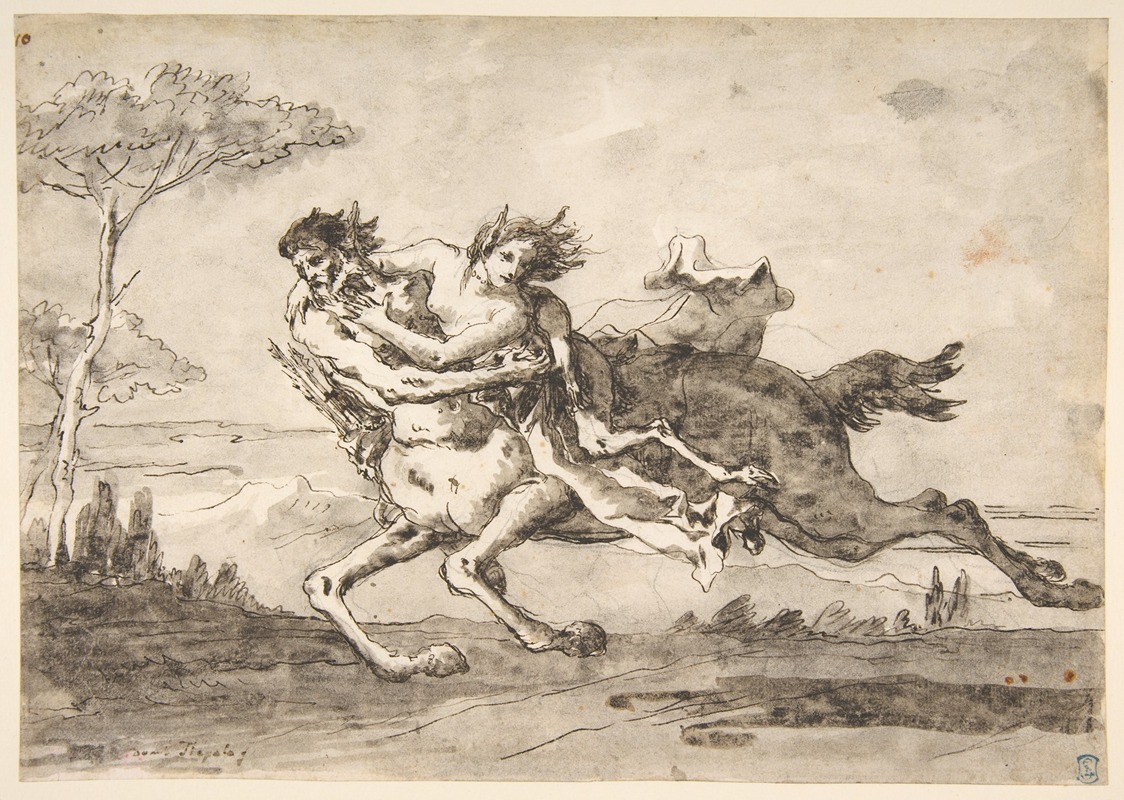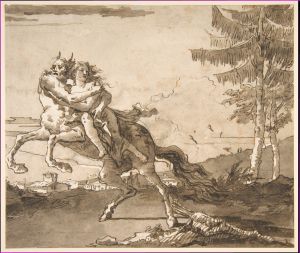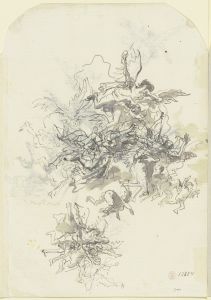
Centaur Abducting a Satyress
A hand-painted replica of Giovanni Domenico Tiepolo’s masterpiece Centaur Abducting a Satyress, meticulously crafted by professional artists to capture the true essence of the original. Each piece is created with museum-quality canvas and rare mineral pigments, carefully painted by experienced artists with delicate brushstrokes and rich, layered colors to perfectly recreate the texture of the original artwork. Unlike machine-printed reproductions, this hand-painted version brings the painting to life, infused with the artist’s emotions and skill in every stroke. Whether for personal collection or home decoration, it instantly elevates the artistic atmosphere of any space.
"Centaur Abducting a Satyress" is a painting by the Italian artist Giovanni Domenico Tiepolo, who was an important figure in the Venetian school of the 18th century. Born in Venice in 1727, Giovanni Domenico was the son of the renowned painter Giovanni Battista Tiepolo. He often collaborated with his father and brother, Lorenzo, on various projects, but he also developed his own distinctive style and body of work.
The painting "Centaur Abducting a Satyress" is an example of Giovanni Domenico Tiepolo's fascination with mythological themes, a common subject in the art of the period. This work depicts a dramatic scene from classical mythology, where a centaur, a creature with the upper body of a human and the lower body of a horse, is shown abducting a satyress, a female counterpart to the satyr, who is a creature that is part human and part goat.
The composition of the painting is dynamic and filled with movement, characteristic of Tiepolo's style. The centaur is depicted in a powerful stance, his muscular form emphasizing his strength and dominance. The satyress, on the other hand, is portrayed with a sense of vulnerability and distress, her body language conveying her struggle against the abduction. The contrast between the two figures enhances the dramatic tension of the scene.
Tiepolo's use of color and light in "Centaur Abducting a Satyress" is also noteworthy. He employs a rich palette to bring the figures to life, using light to highlight the forms and create a sense of depth. The background is often less detailed, focusing the viewer's attention on the central action of the painting.
Giovanni Domenico Tiepolo's works are known for their lively and expressive qualities, and "Centaur Abducting a Satyress" is no exception. The painting reflects his ability to capture the emotional intensity of mythological narratives, making them accessible and engaging to the viewer. His technique and approach to composition were influenced by his father's work, but he also brought his own unique perspective to his art.
The painting is part of a larger body of work by Giovanni Domenico Tiepolo that explores similar themes and subjects. His interest in mythology, combined with his skillful execution, has made his works enduring examples of 18th-century Venetian art. "Centaur Abducting a Satyress" remains a testament to his talent and his contribution to the artistic heritage of the period.
Overall, Giovanni Domenico Tiepolo's "Centaur Abducting a Satyress" is a significant work that showcases the artist's mastery of mythological themes, dynamic composition, and expressive use of color and light. It continues to be appreciated for its artistic merit and its place within the broader context of 18th-century European art.


















